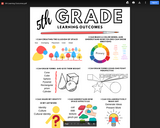
5th Grade Visual Learning Outcomes
- Subject:
- Art and Design
- Fine Arts
- Material Type:
- Curriculum Map
- Author:
- Tasha Newton
- Date Added:
- 08/20/2019

5th Grade Visual Learning Outcomes
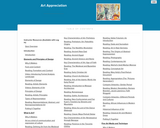
This course is particularly focused on helping you develop visual literacy skills, but all the college courses you take are to some degree about information literacy. Visual literacy is really just a specialized type of information literacy. The skills you acquire in this course will help you become an effective researcher in other fields, as well.
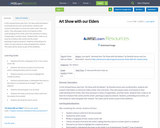
In this remixed lesson plan from “Art Show with the Masters” by Daniella Garran and Lisa Brizendine, students will research information on American Indian artists' lives and works. They will prepare works of art based on their understanding of the artists, their time and place in history (if applicable), and their works. Students then create an art show for to feature their artists and the artists' paintings/sculptures/artwork. Students, pretending to be artists, are interviewed on video alongside their artwork. This video will be shown as part of the exhibition.
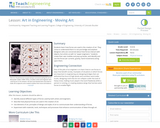
Students learn how forces are used in the creation of art. They come to understand that it is not just bridge and airplane designers who are concerned about how forces interact with objects, but artists as well. As "paper engineers," students create their own mobiles and pop-up books, and identify and use the forces (air currents, gravity, hand movement) acting upon them.
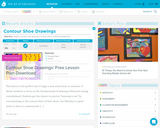
This website has National Standard aligned lesson plans, courses art teachers (and others) can take for credit or professional development, and online magazine, videos, and art conferences.
They cover art: advocacy, assessment, classroom management, creativity, technology, curriculum, differentiation, Instructional strategies, media, techniques, methods, approaches, organization, philosophies, and professional development.

Use the attached resources to research careers associated with this career cluster.
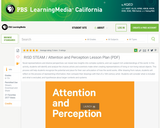
Novel representations and diverse perspectives can reveal new insights into complex systems, and can support rich understandings of the world. In this activity, students will identify and analyze the choices artists and scientists make when creating representations of living or non-living natural objects. This process will help students recognize the potential and place for their own articulation of how the world works. After drawing from nature, students will reflect on the process of representing information, then compare their drawings with that of a 16th-century artist. Students will consider what is included and what is excluded, and hypothesize about larger contexts and systems.
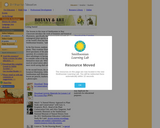
The lessons in this issue of Smithsonian in Your Classroom introduce the work of botanists and botanical illustrators, specifically their race to make records of endangered plant species around the world. “Very little of the world’s flora has been fully studied,” says one Smithsonian botanist, “and time is running out.” In the first lesson, students gets to know six endangered plants. They examine illustrations, photographs, and dried specimens of the plants as they consider this question: If a scientist can take a picture of a plant, are there advantages in having an illustration? They go on to consider some of the big questions that botanists themselves must ask: Which of these species are most in need of conservation efforts? Are any of these plants more worth saving than others?In the second lesson, the students try their own hands at botanical illustration, following the methods of a Smithsonian staff illustrator. All that is required for the lesson are pencils, markers, tracing paper, and access to a photocopier.
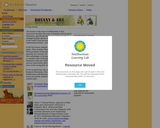
Students are introduced to the work of botanists and botanical illustrators, and specifically to their race to make records of endangered plant species around the world. Students examine illustrations, photographs, and dried specimens of endangered plants and consider the conservation value of an illustration over a photographic image. In a second session, students try their own hands at botanical illustration and follow the methods of a Smithsonian staff illustrator. Pencils, markers, tracing paper, and access to a photocopier are required.
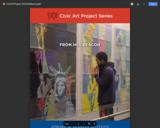
From document: Students will work collaboratively to create a mural of the Statue of Liberty to show the statue as a representation of freedom and a symbol of welcome to immigrants coming from other countries.
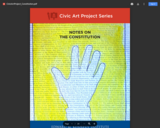
From lesson: Students create art works based on an examination of the language of the Constitution and the personal connections they make. These art works will incorporate words, illustrations, and mixed media images.

Designed with inclusivity, cultural relevance, social justice and regional curriculum in mind, these coding & robotics programs are offered free to K-12 classrooms across subject areas.
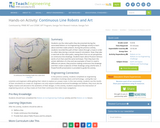
Students use the robot paths they documented during the associated Robots on Ice Engineering Challenge activity to learn about and then make artwork. During the previous activity, students recorded the path of their robots through a maze in order to collect data during a remote research simulation. Now, they take a new look at the robot paths, seeing them from an art perspective as continuous line drawings. Students learn about Picasso’s famous works of art that used the same technique. Then they learn the artistic definition of a line and see examples of how it is used in different art pieces; they practice making continuous line drawings and then create sculptures of their drawings using colorful wire. A PowerPoint® presentation is provided to guide the activity.
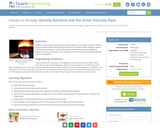
Students explore the densities and viscosities of fluids as they create a colorful 'rainbow' using household liquids. While letting the fluids in the rainbow settle, students conduct 'The Great Viscosity Race,' another short experiment that illustrates the difference between viscosity and density. Later, students record the density rainbow with sketches and/or photography.

Review the environmental factors that make the Earth habitable and compare them to other worlds within our Solar System. Use creative thinking to design an alien life form suited for specific environmental conditions on an extra-terrestrial world within our Solar System.
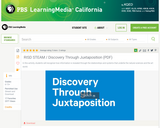
Problem solving is often guided by disciplinary frames of reference, which can restrict our ability to see other possibilities. This exercise uses object-based learning to underscore the idea that there is more than one way of analyzing and knowing the world, and that through multiple ways of knowing, we develop more complex understandings and new solutions. Through the process of critique, an essential part of visual-arts pedagogy, students practice analyzing and reflecting both individually and in groups.
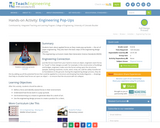
Students learn about applied forces as they create pop-up-books the art of paper engineering. They also learn the basic steps of the engineering design process.

This site provides descriptions and resources for pedagogy in the areas of: dance, music, theatre, and visual arts.
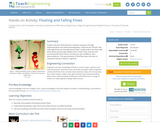
Students discover fluid dynamics related to buoyancy through experimentation and optional photography. Using one set of fluids, they make light fluids rise through denser fluids. Using another set, they make dense fluids sink through a lighter fluid. In both cases, they see and record beautiful fluid motion. Activities are also suitable as class demonstrations. The natural beauty of fluid flow opens the door to seeing the beauty of physics in general.
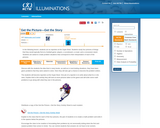
In this Illumination activity, students act as reporters at the Super Bowl. Students study four pictures of things that they would typically find at a football game: players, a scoreboard, a crowd, and a concession stand. Students are asked to create problem situations that correspond to their interpretation of each of the pictures. The lesson includes a student worksheet and extension questions.